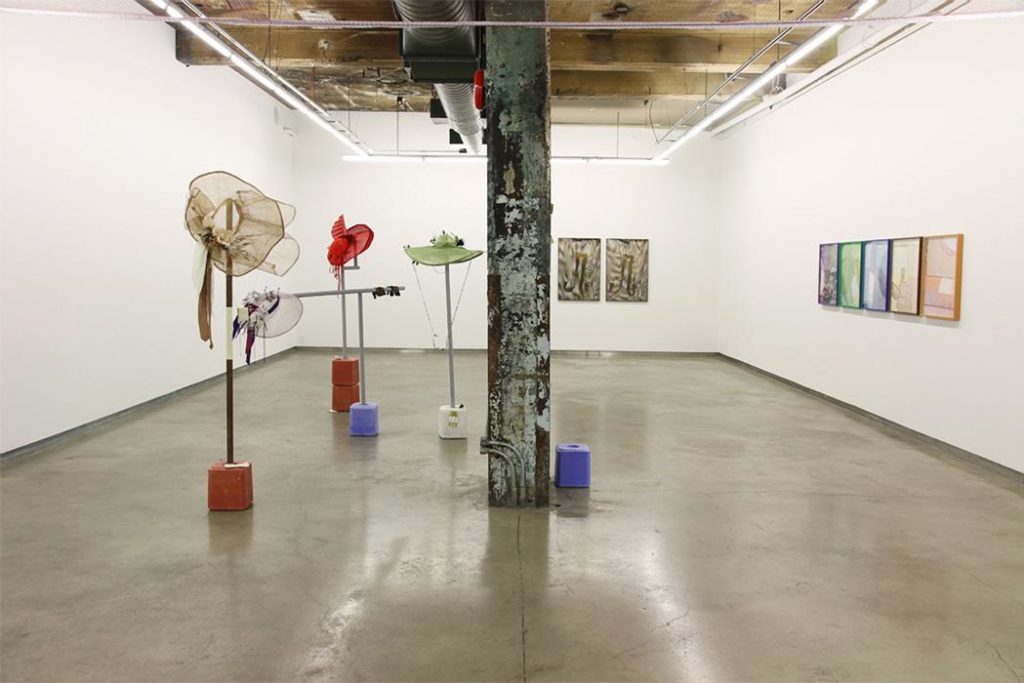“Razzle Dazzle Sis Boom Bah,” Karen Kraven’s current solo exhibition curated by Nicholas Brown at the Darling Foundry in Montreal, proffers a poetic conglomeration of sculpture and photography. It presents the viewer with an open-ended narrative ensemble embedded with an array of perceptual and material inquiries.
The artist’s proclivity for gleaning source material from the rich archive of competitive sport—often as a means of destabilizing inherent structural systems—is present throughout this exhibition. Subject matter is not used as a closed framework, but rather as a prompt into a much more complex and invested dialogue between the object and its relationship with narrative, materiality and language.
Throughout the show, the viewer encounters the common thread of netting, a material which allows transparency while simultaneously acting as a physical and conceptual trap. The photographic pair entitled Dawn Hunt (2014) and Dusk Hunt (2014), for example, takes as its subject the polyester mesh netting of a knapsack used to hold duck decoys. Photographed in studio to emphasize the optical moiré effect of the fabric, these images have the potential to operate as an abstracted optical “trap” (due to their destabilizing effect) while presenting a clear representation of the quotidian material object at hand.
Similarly embracing the tenuous line between abstraction and representation is a series of images of meticulously folded Canadian banknotes hung in alternating custom-coloured frames. Through the process of scanning, Kraven became interested in the anti-piracy software which picked up on the embedded patterning of the banknotes, thereby inhibiting their digital reproduction. In an attempt to trick this software, Kraven became engaged in abstracting the already inherently abstract patterns by folding, cropping and enlarging until the patterning was still legible, yet no longer recognizable to the software.
The motif of currency and forgery is carried throughout the exhibition in the form of scattered ceramic bills, which are encountered as they hang trapped in overhead sports netting, lie wedged in crevices within the architecture of the gallery, or simply rest on the floor.
Most prominently, a group of sculptures appears to form a community of members who empathize with one another by virtue of their shared negation of the same elitist clique. Comprised of stands staked in painted salt licks, these sculptures are anthropomorphized not only through their scale and positioning, but also through another use of netting material—this time it forms the transparent structure of a women’s sun hat. Recalling the extravagance and costume of horse-racing spectators, these structures are injected with a specific brand of humour through an array of unexpected ornamentation. Dangling earphones, sparkly fish lures, porcupine quills, dirty socks, houseflies, leather gloves and tinsel compile to form an absurdist variant on a modern-day baroque aesthetic.
Through her mercurial production, Kraven tells stories. These stories are not told as coherent narratives, but rather as products of successive perceptual investigations which begin in the studio and are bestowed upon the viewer through the gesture of the exhibition. It is within these parameters that Kraven sets up the operative space of the stage, where she conducts a theatre full of bewildering associative encounters and material amalgamations.









